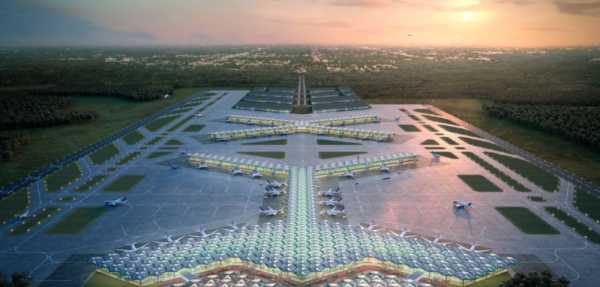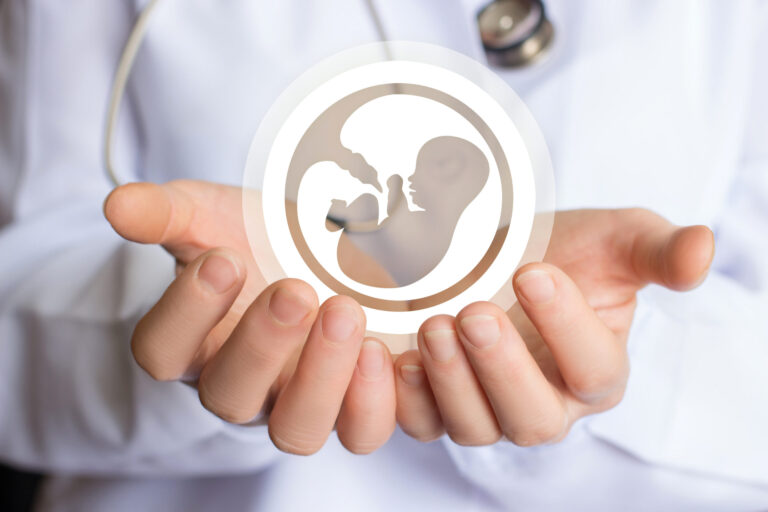
The envisaged airport for Poland's Centralny Port Komunikacyjny (CPK) — a large-scale infrastructure project designed to interconnect the wider region of central Europe through more than 2,000km of high-speed rail (Photo: Centralny Port Komunikacyjny)
With Poland and Finland pledging to deliver German-manufactured Leopard II tanks to Ukraine, pressure is growing on Berlin to approve the shipments and to even send tanks itself.
Berlin’s hesitance in the face of commitment from Poland and the Baltic countries to Ukraine betrays Germany’s unwillingness to fully commit to improved European security structures since Russia’s invasion of Ukraine on February 24, 2022 reflecting a lack of real will to defeat the enemy.
Particularly Poland has long warned Brussels, Berlin and the other EU capitals of the Russian threat, knowing that Moscow will never be satisfied with Ukraine and Georgia alone — a fact proven by the growing likelihood of a Russian invasion of Moldova’s break-away region Transnistria and its increasing grip on Belarus.
The Baltic States are also next in line despite Russian military setbacks in Ukraine, and it’s clear that as long as Putin’s regime, or any equivalent, is in place, there can be no security and peace in Europe.
Any security arrangement with Moscow is a guilty illusion. Indeed, within the wider Baltic region, the Kremlin may be increasingly tempted to test both Nato’s resolve and its operational capabilities.
There is no question that Europe needs to urgently update its military capabilities in response to this threat.
But proofing European security against Russian aggression must include more than just a narrow focus on military hardware: equally pivotal is the improvement and expansion of the continent’s critical transport infrastructure. European policymakers have been aware of this need since at least 2017, when a briefing on the need for better military mobility across Europe stated that “European infrastructure that enables connectivity and ensures a rapid response in case of a crisis is a prerequisite” for “a strong and united Europe can protect our citizens against threats internal and external.”
Since then, the EU’s and Nato’s entire Eastern flank has taken strong initiatives to meet this challenge successfully.
The EU has been working on a New Action Plan on Military Mobility since 2018 to address infrastructure shortcomings in case of conflict, which includes improvement of dual-use transport infrastructures and deepened cooperation between EU, Nato, Ukraine and Moldova, sharing best practices with the Western Balkans partners and as well as the US, Canada and Norway.
However, the funding currently remains too limited to swiftly ensure massive deployments — one of the well-known shortcomings of the EU defence.
In its last annual review, the European Defence Agency deplored the fact that cooperative projects accounted for only 18 percent of the money allocated to defence.
In particular, it noted that critical gaps, including the competing visions of the links between Nato and the European Common Security Defence Policy (CSDP) held by EU member states, could jeopardise the coherence of the defence effort.
Given the geopolitical urgency, it is regrettable that a lack of cooperation on infrastructure is hindering further progress in that field.
The EU would therefore be well-advised to take advantage of a wide range of civilian infrastructure initiatives across its Eastern flank, which seek to expand connectivity in the region deep into the European hinterland.
Polish epicentre
In this respect, Poland’s Centralny Port Komunikacyjny (CPK) — a large-scale infrastructure project designed to interconnect the wider region of central Europe through more than 2,000km of high-speed rail and a major airport — is one of the most promising and highly transformative regional projects.
As a central transport hub, CPK, once completed, would not only integrate the EU’s Northern coast, but also the Central European industrial centres.
CPK also plays a crucial role in linking Eastern and Central Europe to Europe’s far South as an important infrastructure focal point within the Three Seas Initiative (3SI). Complementary to the CPK, the 3SI covers the EU’s entire Eastern border, including the Western Balkans.
Once completed, it will connect the Adriatic, Baltic and Black Seas to form a continuous infrastructure network with benefits for commerce and economic integration, as well as military mobility.
Sign up for EUobserver’s daily newsletter
All the stories we publish, sent at 7.30 AM.
By signing up, you agree to our Terms of Use and Privacy Policy.
With French president Emmanuel Macron’s overdue revision of his approach to Russia and his recognition of the need to strengthen Europe’s Eastern flank — deploying troops to Romania, for example — time is right to combine this new vision, which breaks with past mistakes that Central and Eastern Europe had blamed him for, with his constant advocacy of a European defence.
This approach had brought him criticism not so much because of the idea itself, but because of its combination with a misunderstanding of the Russian regime that had led Macron to believe in a possible accommodation.
The favour that France could give to these initiatives within a revised European defence approach and policy is all the more credible since Germany’s Olaf Scholz cannot be considered a wholly reliable partner.
Berlin continues to look to Moscow and is reluctant to deliver to Ukraine the new generation Leopard-2 tanks that would be of great use in launching an offensive against Russian troops. Instead, the recent satellite agreement between Paris and Warsaw may be a harbinger of increased cooperation.
If Paris were to become an open champion of the Poland’s and the Baltic states’ cause, France itself could capitalise immensely from a region reinvigorated by the 3SI — especially in case of a Ukrainian victory against Russia.
Germany, the region’s dominant economic partner, is much disliked, so France would do well to see this as a major opportunity for its own investors. The region will not only be at the forefront of Europe’s defence, which justifies strengthening its interconnection in terms of military mobility with Western Europe, but could see major growth if Ukraine were to join the EU and undergo reconstruction.
While it is still a long way till then, the Ukraine war has served as a wake-up call on many levels, from digital to energy and transportation and connectivity.
The EU must prepare for a future that includes an aggressive Russia to the East, which entails taking questions of military defence and transportation networks as an existential issue. If Europe wants to remain prosperous and secure, it must now act jointly to transform itself, or be paralysed by danger.
Source: euobserver.com



